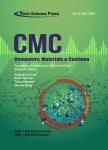Alzheimer’s Disease Stage Classification Using a Deep Transfer Learning and Sparse Auto Encoder Method
作者机构:Department of Computer Science and EngineeringSRM Institute of Science and TechnologyVadapalaniChennai600026TamilnaduIndia
出 版 物:《Computers, Materials & Continua》 (计算机、材料和连续体(英文))
年 卷 期:2023年第76卷第7期
页 面:793-811页
核心收录:
主 题:Alzheimer’s disease mild cognitive impairment Weiner filter contrast limited adaptive histogram equalization transfer learning sparse autoencoder deep neural network
摘 要:Alzheimer’s Disease(AD)is a progressive neurological *** diagnosis of this illness using conventional methods is very *** Learning(DL)is one of the finest solutions for improving diagnostic procedures’performance and forecast *** disease’s widespread distribution and elevated mortality rate demonstrate its significance in the older-onset and younger-onset age *** light of research investigations,it is vital to consider age as one of the key criteria when choosing the *** younger subjects are more susceptible to the perishable side than the older *** proposed investigation concentrated on the younger *** research used deep learning models and neuroimages to diagnose and categorize the disease at its early stages *** proposed work is executed in three *** 3D input images must first undergo image pre-processing using Weiner filtering and Contrast Limited Adaptive Histogram Equalization(CLAHE)*** Transfer Learning(TL)models extract features,which are subsequently compressed using cascaded Auto Encoders(AE).The final phase entails using a Deep Neural Network(DNN)to classify the phases of *** model was trained and tested to classify the five stages of *** ensemble ResNet-18 and sparse autoencoder with DNN model achieved an accuracy of 98.54%.The method is compared to state-of-the-art approaches to validate its efficacy and performance.



